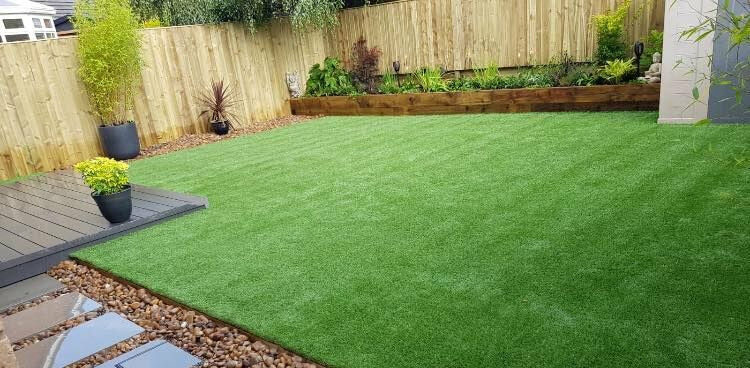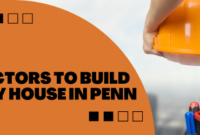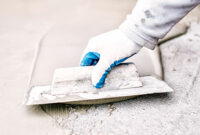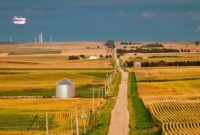Artificial Grass Installation Costs – Artificial grass has become a popular alternative to natural grass for homes, commercial properties, and sports fields.
It offers a low-maintenance, durable, and aesthetically pleasing solution, making it a smart investment. However, the cost of installing artificial grass varies widely based on a number of factors.
In this article, we’ll break down everything you need to know about artificial grass installation costs, key pricing factors, and tips for budgeting your project effectively.
1. Overview of Artificial Grass Installation Costs
The cost of installing artificial grass depends on several elements such as the type of grass, installation complexity, and the region where you live.
On average, artificial grass installation costs range from $5 to $20 per square foot. This price includes materials, labor, and necessary equipment. Here’s a general breakdown of the costs:
- Basic Installation: $5 – $10 per square foot
- Mid-range Installation: $10 – $15 per square foot
- Premium Installation: $15 – $20 per square foot
For example, a 500-square-foot lawn may cost between $2,500 and $10,000 depending on the level of materials and labor required.
Read also:
1. Step-by-Step Guide: How to Install Artificial Grass Like a Pro
2. Revitalize Synthetic Lawn: How to Clean Artificial Grass Effectively
3. 47 Creative Artificial Grass Ideas to Elevate Your Front Yard
2. Key Factors Affecting Artificial Grass Installation Costs
Several factors influence the overall cost of your artificial grass installation. Understanding these variables can help you better plan and estimate your project budget:
a) Type and Quality of Artificial Grass
Not all artificial grass is created equal. The price will vary depending on the quality and type of grass you choose. There are three main types:
- Nylon: The most durable, best for high-traffic areas, but also the most expensive.
- Polyethylene: Softer than nylon, making it ideal for residential lawns and sports fields. It’s a mid-range option.
- Polypropylene: The most affordable but less durable. It works best for decorative, low-traffic areas.
High-quality artificial grass that looks realistic and lasts longer will naturally cost more.
b) Size of the Area
The larger the area you want to cover, the higher the installation cost. Large-scale projects often qualify for bulk pricing on materials but will still require more labor, which can drive up costs.
c) Site Preparation
Before the grass is laid down, the area must be properly prepared. This may involve:
- Removing existing natural grass
- Excavating soil
- Installing a weed barrier
- Leveling the ground
- Installing drainage systems if required
Site preparation can add significantly to the overall cost, especially if the area requires extensive work.
d) Labor Costs
Labor can account for a significant portion of the installation cost. The complexity of the job, the difficulty of accessing the site, and the experience of the installers all impact the final price. Depending on your region, labor rates can vary from $2 to $8 per square foot.
e) Additional Features
If you want added features like pet-friendly turf, infill materials, or shock-absorbent underlayment for kids’ play areas, these will increase the cost. The use of infill materials such as sand or rubber is common to keep the turf blades upright and provide cushion, but it adds to the overall price.
3. Pricing Breakdown
To give you a clearer idea of how artificial grass installation costs add up, here’s a sample breakdown of costs for a typical 500-square-foot lawn:
- Artificial Grass: $5 – $10 per square foot ($2,500 – $5,000)
- Labor: $2 – $8 per square foot ($1,000 – $4,000)
- Site Preparation: $1 – $5 per square foot ($500 – $2,500)
- Additional Materials (infill, weed barrier): $1 – $3 per square foot ($500 – $1,500)
In total, this project could cost anywhere from $4,500 to $13,000, depending on the factors mentioned above.
Read more: Step-by-Step Guide: Installing Artificial Grass on Concrete
4. Long-Term Savings and Benefits
While the upfront cost of artificial grass installation may seem high, it offers significant savings in the long run. Here’s how:
a) Reduced Water Bills
Unlike natural grass, artificial turf doesn’t require watering, which can lead to significant savings on your water bill, especially in areas with droughts or water restrictions.
b) Lower Maintenance Costs
Maintaining a natural lawn requires regular mowing, fertilizing, weeding, and pest control, which can add up over time. Artificial grass eliminates these costs, requiring minimal maintenance (usually just occasional brushing and rinsing).
c) Durability
High-quality artificial grass can last 10 to 20 years, offering long-term durability that makes it a smart investment.
d) Improved Property Value
Artificial grass can improve curb appeal and property value, especially in regions where water conservation is critical. Potential buyers may appreciate the eco-friendly and low-maintenance features.
5. Budgeting Tips for Artificial Grass Installation
To make sure you get the best value for your investment, follow these budgeting tips:
a) Compare Quotes
Request multiple quotes from professional installers to compare pricing, materials, and warranties. Make sure to ask for a detailed breakdown of costs so you can see exactly where your money is going.
b) DIY Installation
If you’re handy and have the necessary tools, installing artificial grass yourself can save on labor costs. However, improper installation could lead to issues like poor drainage or uneven surfaces, so be sure to follow the process carefully.
c) Opt for Mid-Range Materials
While premium options may be tempting, mid-range artificial grass often provides the best balance of quality and price. Assess your needs and choose the grass that meets your budget without compromising too much on durability.
d) Plan for Additional Costs
Always budget for unexpected expenses, such as additional site preparation, extra materials, or drainage solutions. Having a cushion of 10-15% above your estimate can help avoid stress if something unexpected comes up.
e) Look for Financing or Discounts
Some installers offer financing options or discounts, especially during off-peak seasons. This can help spread the cost over time or reduce your initial outlay.
Conclusion
Artificial grass installation is a long-term investment that can add beauty and value to your property while saving on water and maintenance costs.
Understanding the factors that affect installation costs, such as the type of grass, site preparation, and labor, will help you plan your budget effectively.
By comparing quotes, choosing the right materials, and preparing for potential additional expenses, you can ensure that your artificial grass project fits your financial plan without sacrificing quality.






